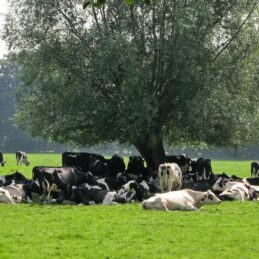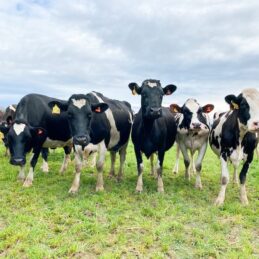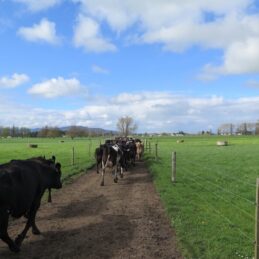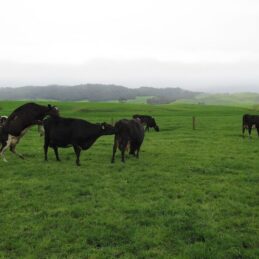Increasing intakes of high-quality silage are crucial to driving on-farm profitability, but to achieve this, we must first understand the role of fibre. Fibre plays a vital function in milk production and the utilisation of silages, influencing rumen function and regulating total dry matter intakes.
Crop growers and maize silage makers should plan to produce forages with high levels of digestible fibre. When silages are analysed, the fibre fraction is usually described as Neutral Detergent Fibre (NDF), Acid detergent fibre (ADF) and lignin. Some more modern analyses report digestible NDF (NDFd), which is a better indicator of the digestibility and therefore the value of the fibre. The ADF which is a measurement of the indigestible fibre found in silage, as the value increases NDFd will decrease as will the energy content of the silage.
Balancing Fibre
Fibre digestibility is crucial as it affects the rate of fermentation in the rumen, the rate of rumen passage and ultimately dry matter intakes. More digestible fibre will be fermented faster in the rumen, stimulating higher intakes. Indigestible fibre sits in the rumen and can depress appetite. Just as with any feed ration, a balance is required. Although fibre needs to maximise NDFd, it needs to be balanced with levels of undigested fibre to increase dry matter intakes and feed efficiency. For example, young grazed grass is very high in NDFd and contains little undigested fibre so passes through the rumen quickly, increasing dry matter intakes. At the other extreme, high straw diets for dry cows are more lignified and contain a much higher level of undigested NDF, passing more slowly through the rumen and reducing dry matter intakes but maintaining a higher rumen fill.
Another factor to take into account to maximise rumen health is the physical effectiveness of that fibre to stimulate rumination. Optimising rumination is essential to maintain high production levels and a healthy rumen environment. Physically Effective Neutral Detergent Fibre (peNDF) is the proportion of fibre that stimulates cudding and the formation of a functional rumen mat. It can be approximately measured in most diets by sieving with a Penn State separator (which all Nutritech Area Managers have available to assist farmers with assessing peNDF). However it is important to acknowledge that the ‘stemminess’, particle shape, and fibre fragility is also important, not just the fibre length.
The ‘physical effectiveness factor’ can vary from 0 (when the NDF is not effective at stimulating cud chewing at all), to 1 (where it is fully effective in promoting cud chewing and rumen buffering).
For example, maize silage will vary from 0.8-0.9 in its physical effectiveness largely depending on the chop length and maturity of the crop at harvest. This value is then multiplied by the NDF tested in the feed, so in this case 0.8PEF x 42%NDF = 33.6% physically effective NDF (peNDF). The ideal peNDF for dairy cows will vary depending on whether they are fed in a total mixed ration (TMR), partial mixed ration (PMR) or are grazing, but as a general guide for most New Zealand dairy systems 22% peNDF is required to maintain good rumination levels and a ruminal pH >6.2.
If you are interested in finding out more about the fibre in your herd’s diet, get in touch with your local Nutritech Area Manager who can utilise both Diet Check, feed testing and their Penn State Particle Separators.

Diet with poor fibre digestibility





